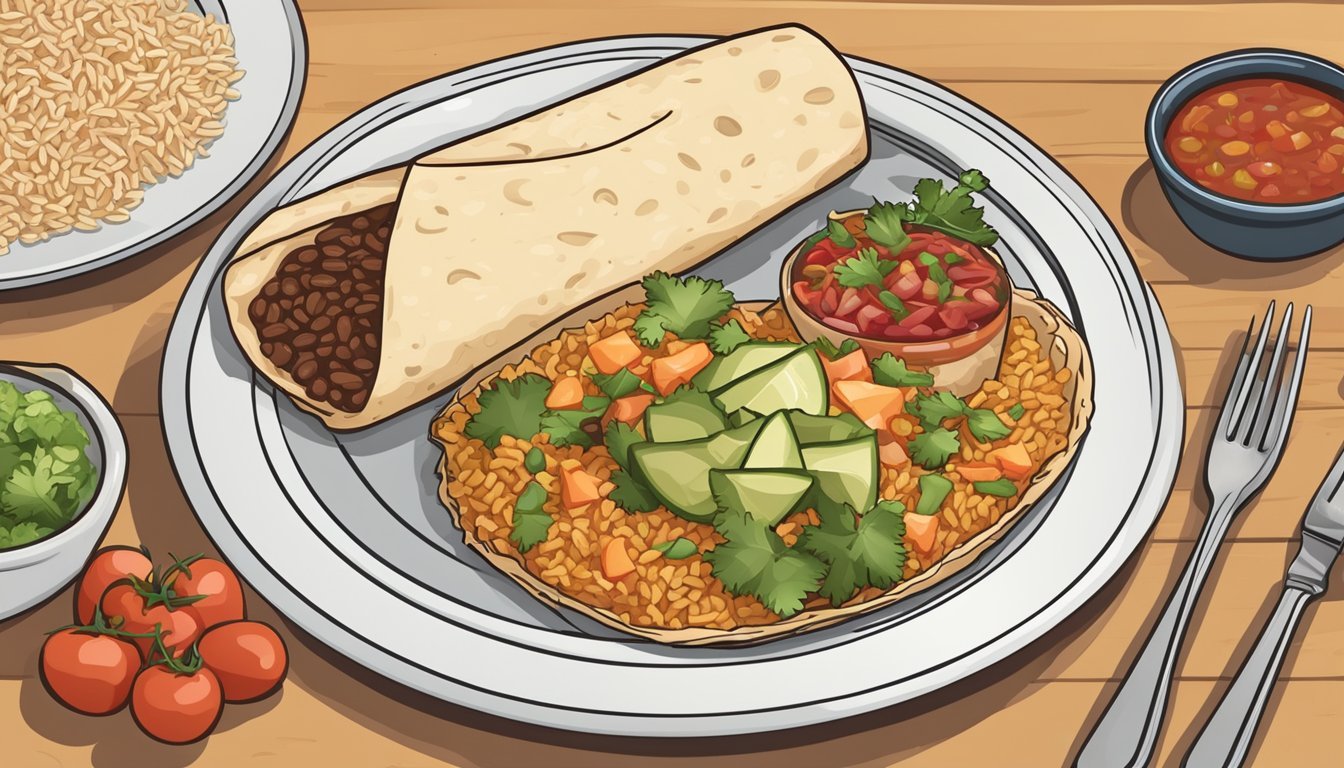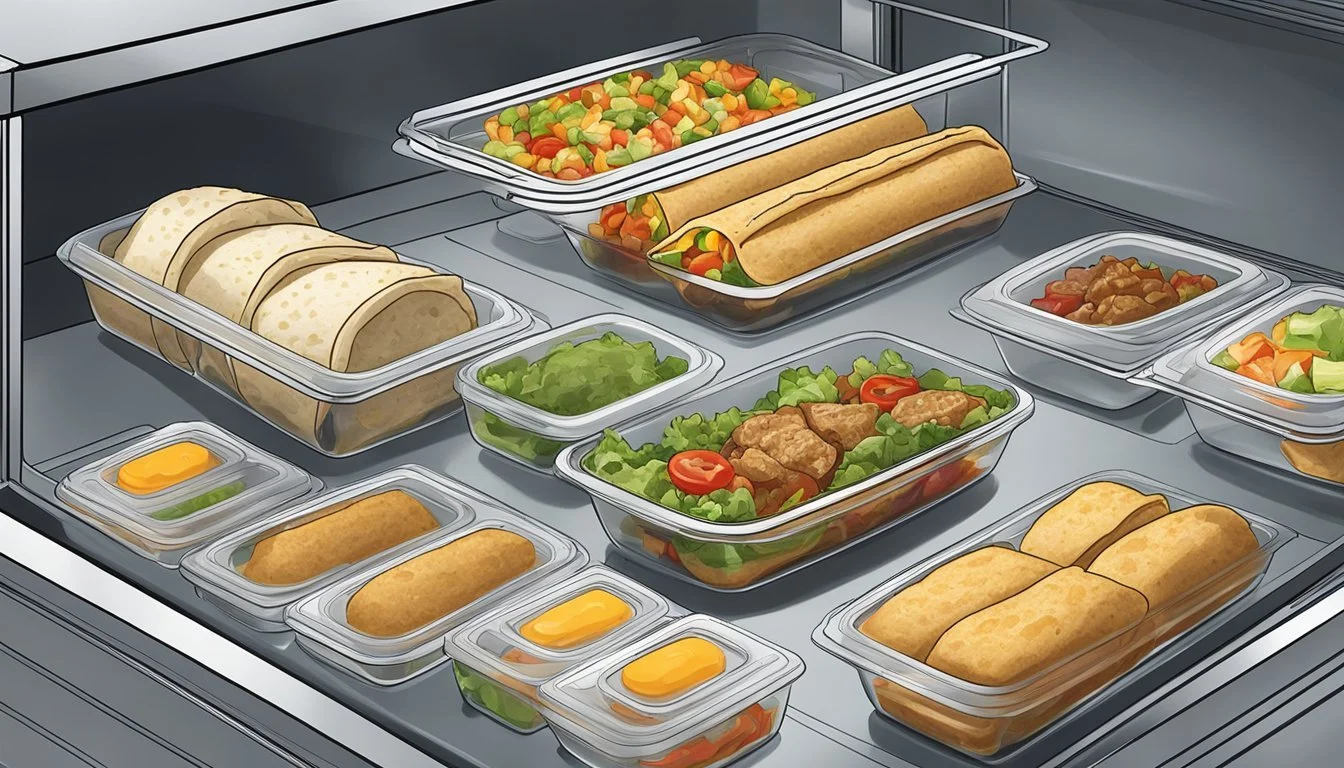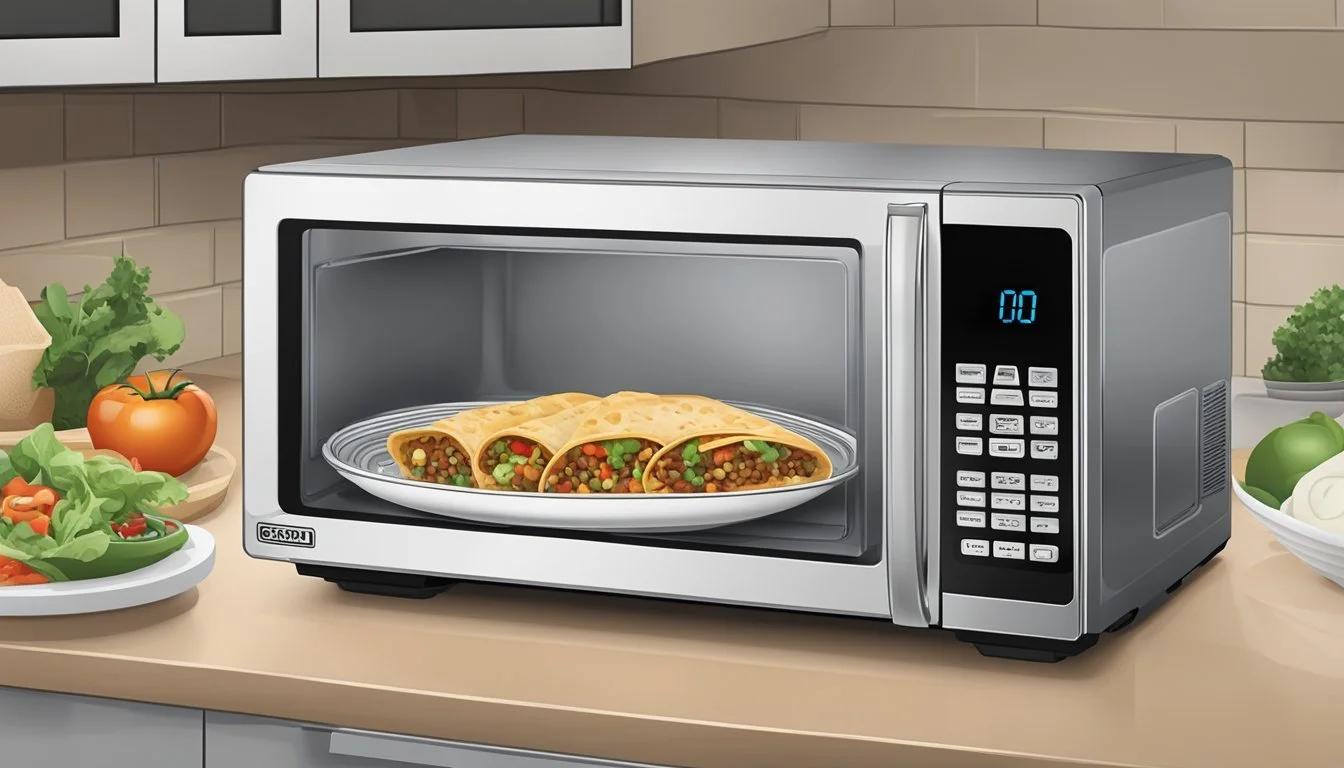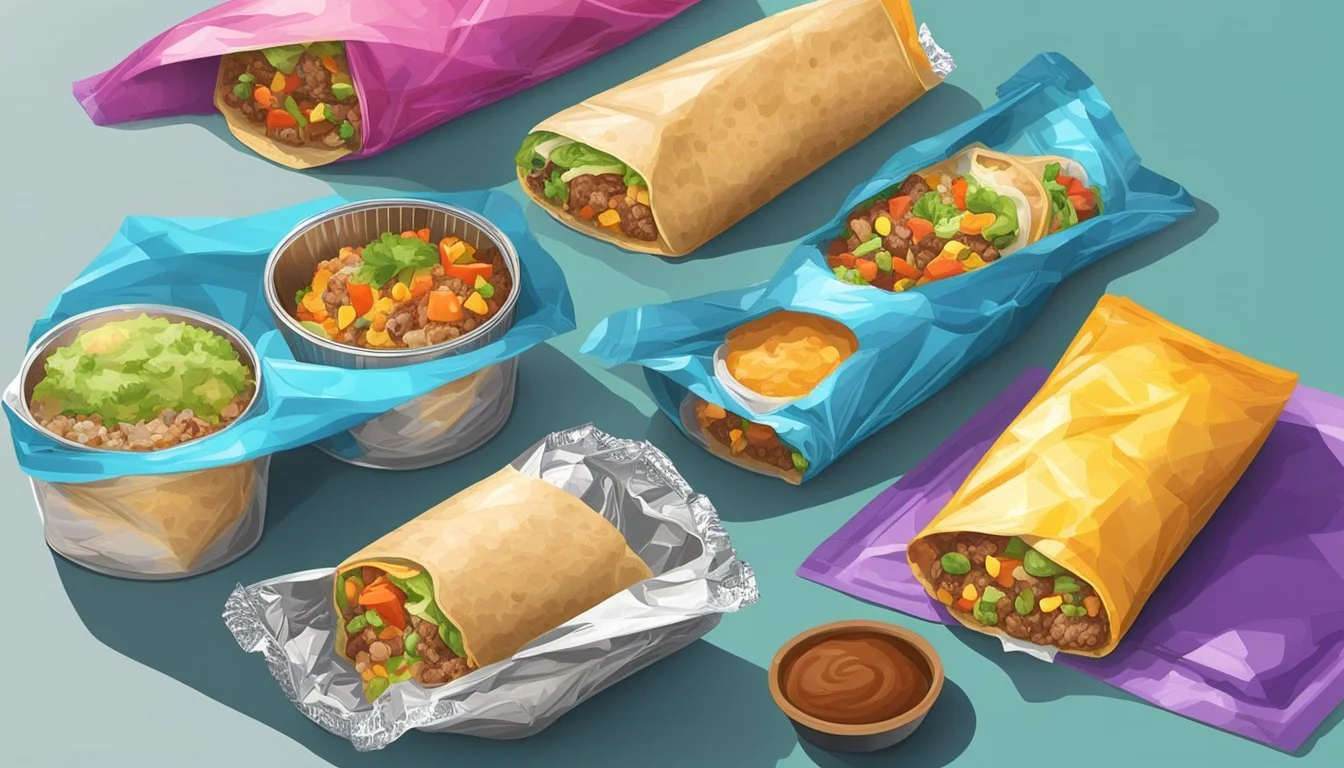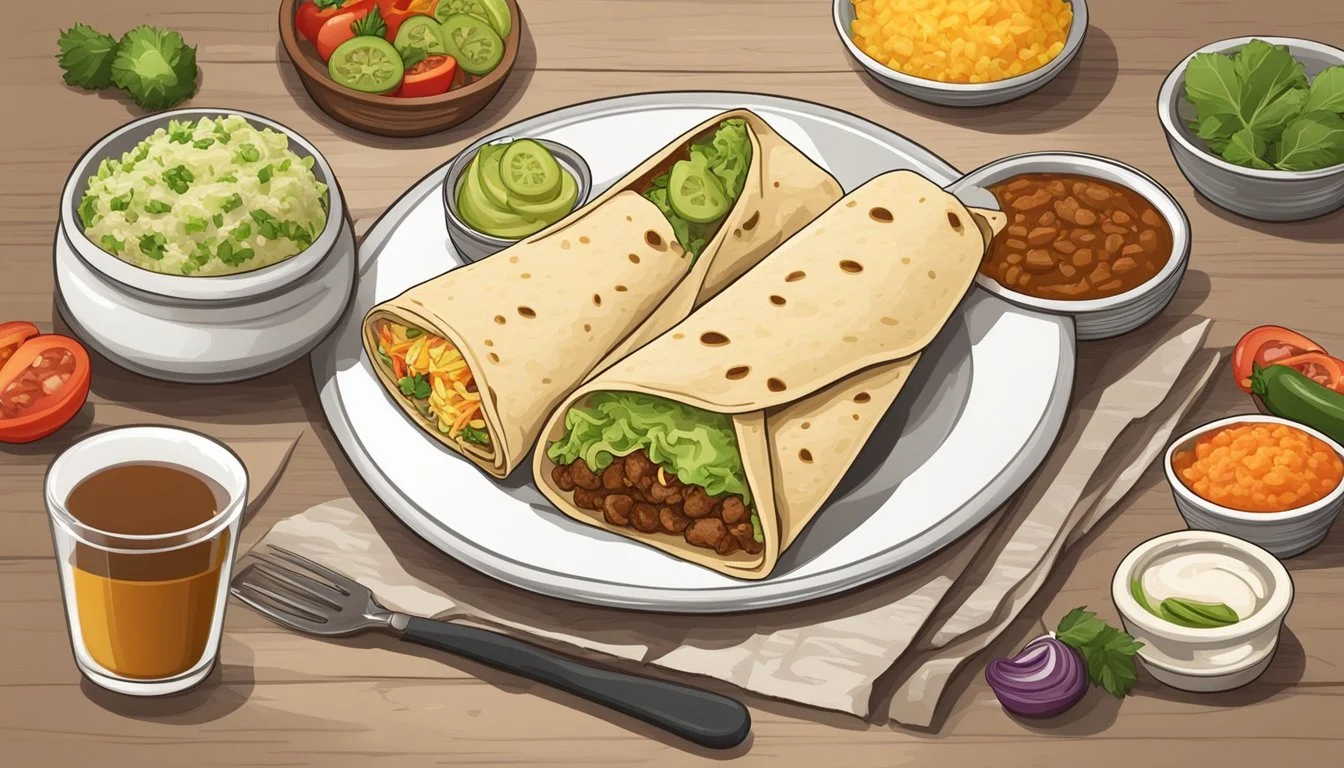How Long Do Freshly Prepared Burritos Last?
Shelf Life and Storage Tips
Understanding the shelf life of freshly prepared burritos is crucial for both food safety and quality. A burrito typically consists of a flour tortilla filled with a variety of ingredients such as beans, cheese, meat, and vegetables. The longevity of these ingredients, once combined in a burrito, can vary. Store a freshly prepared burrito in the refrigerator or freezer to extend its shelf life. This acts as a deterrent to the rapid growth of bacteria, which proliferates at temperatures between 40°F and 140°F.
When storing burritos, it's important to seal them properly in a container or wrap them tightly with foil before placing them in the fridge. This helps to keep out moisture and other contaminants. On average, a refrigerated burrito will maintain its quality for 2-3 days. The diverse ingredients in a burrito can affect its shelf life; for instance, those containing meat, beans, and cheese are particularly prone to spoilage when kept at room temperature for too long.
In terms of freezer storage, wrapping the burrito tightly and using an air-tight container can preserve its quality. When frozen, a burrito can last for up to 2-3 months. Always ensure food safety by reheating burritos to an internal temperature of 165°F, as measured by a food thermometer, which is the temperature required to kill harmful bacteria.
Understanding Burrito Ingredients
The shelf life of a burrito is greatly influenced by its components; hence knowing the perishability of individual ingredients is essential for determining its freshness.
Meat and Protein Varieties
Freshly prepared burritos often contain a variety of meats and proteins such as chicken, beef, tofu, or eggs. The type of meat affects the longevity of the burrito. Meat should be properly cooked and refrigerated if not eaten immediately, and it generally lasts for:
Chicken: 1-2 days in the fridge
Beef: 2-3 days in the fridge
Eggs: 1-2 days in the fridge
Tofu: 3-5 days in the fridge
Vegetables and Fresh Produce
Vegetables like lettuce, tomato, onions, bell peppers, spinach, and mushrooms tend to spoil quicker. For instance, fajita vegetables should be consumed within 1-2 days, while hardier vegetables might last a bit longer. Fresh produce enhances taste but reduces shelf life due to moisture content.
Additional Fillings and Toppings
Beans, rice, cheese, sour cream, guacamole, and salsa are additional fillings that contribute to the flavor profile and texture of a burrito. While cheese can last up to a week, other ingredients like salsa and guacamole may spoil faster. Beans and rice can maintain quality for 3-4 days when refrigerated.
Tortillas and Wraps
The outer layer, typically a flour, corn, or wheat tortilla, plays a role in overall burrito integrity. Stored separately, tortillas can last up to a week in the fridge and even longer in the freezer. When prepping burritos for later use, wrapping them in foil or parchment paper can keep them fresh and prevent sogginess.
Proper Storage Techniques
Freshly prepared burritos can last significantly longer when stored with the correct techniques focused on maintaining food safety and freshness.
Refrigeration Best Practices
Ideal Refrigerator Temperature: Store burritos in the fridge within two hours of preparation to prevent bacteria growth. The refrigerator should be at a temperature of 40°F or below according to USDA guidelines.
Container Matters: Place burritos in an airtight container or wrap them tightly with plastic wrap or aluminum foil to maintain moisture and prevent contamination.
How to Freeze and Thaw
Freezing Burritos:
Wrap each burrito individually in aluminum foil or wax paper.
Place wrapped burritos in a freezer bag, squeezing out as much air as possible.
Label with the freezing date for proper rotation and use within 2-3 months.
Refrigerate overnight for slow thawing, retaining moisture and preventing bacterial growth.
For quicker thawing, use the microwave, following the manufacturer's defrost setting.
Countering Contamination
Always wash hands before handling food to minimize the risk of contamination.
Use separate cutting boards and utensils for different ingredients to avoid cross-contamination.
Avoid opening the refrigerator frequently, as fluctuating temperatures can invite bacteria proliferation.
Alternative Storage Options
Non-Refrigeration Short-term:
At cool room temperatures, a burrito may be safe for up to four hours.
If the room temperature is above 90°F, the safe window decreases to one hour.
If Refrigeration Isn't Available:
Insulated bags with ice packs can be an alternative to keep burritos cool for a few hours.
A cooler, pre-chilled and packed with ice, can extend this time slightly longer.
Shelf Life and Freshness
Proper storage is crucial for maintaining the freshness and extending the shelf life of burritos. Factors such as temperature and preservation method play key roles in keeping a burrito's texture, taste, and smell satisfactory while preventing spoilage.
Room Temperature Considerations
Freshly prepared burritos should not be left out at room temperature for more than 2 hours, as the risk of spoilage increases significantly. The "danger zone" for bacterial growth is between 40°F and 140°F, which can rapidly degrade freshness and lead to foodborne illness.
Refrigerated Lifespan
When stored in the refrigerator at or below 40°F, the lifespan of a burrito can extend up to 3-5 days. The ingredients play a role in this duration; for instance, burritos containing dairy or meat are particularly susceptible to spoilage. Proper sealing in airtight containers or wrap can help maintain freshness and texture.
Storage Tip: Keep burritos in a sealed container or wrap tightly in plastic wrap or aluminum foil.
Impacts of Freezing on Longevity
Freezing a burrito can prolong its shelf life to 2-3 months. However, the texture of ingredients such as rice and fresh vegetables may be altered upon thawing. Freezing should be done correctly to maintain taste and prevent freezer burn.
Recommended: Freeze individual burritos wrapped tightly in foil or plastic wrap.
Note: Label the burritos with the freezing date to track how long they have been stored.
Reheating Prepared Burritos
When reheating prepared burritos, one's primary goals should be to preserve the original texture and taste of the burrito, maintain food safety, and ensure that the temperature is even throughout. Various methods exist for reheating, each with its own set of techniques to achieve optimal warmth and flavor.
Microwave Reheating Method
The microwave is a quick and convenient option for warming leftover burritos. To reheat in the microwave, the burrito should be loosely covered with a damp paper towel to add moisture and prevent the tortilla from becoming too tough. Recommended steps for microwave reheating are:
Place the leftover burrito on a microwave-safe plate.
Cover it with a damp paper towel.
Heat on medium power in 30-second intervals, checking the temperature between intervals to avoid overheating.
It's crucial to ensure that the reheated burrito reaches an internal temperature of at least 165°F for safety.
Oven and Grill Pan Techniques
Reheating a burrito in the oven can give it a texture similar to its original state. To use an oven:
Preheat the oven to 350°F.
Wrap the burrito in aluminum foil.
Place the wrapped burrito on a baking tray.
Heat for about 10-15 minutes.
For those who prefer a crispier outing, a grill pan can be used after oven reheating to crisp the tortilla. Here's how:
Preheat the grill pan over medium heat.
Unwrap the burrito from the foil.
Place it in the grill pan for a few minutes on each side until the tortilla is crispy to the touch.
Avoiding Reheating Mistakes
Understanding the properties of the ingredients within burritos is key to effective reheating. For instance, burritos with high moisture contents, like those with tomatoes or lettuce, might not reheat well in the oven. To avoid common reheating mistakes, ensure that:
Burritos are not overheated, which can dry out the tortilla and lead to unevenly warmed fillings.
Any burrito containing dairy or cooked egg should particularly be checked for an even temperature of 165°F before consumption to prevent foodborne illnesses.
Foil should not be used in the microwave, as it can cause sparks and fire.
Leftover burrito from the refrigerator should reach an even internal warmth, with no cold spots, for the best flavor and texture.
Identifying Spoilage
When assessing burrito spoilage, it is crucial to recognize visual or olfactory signs, understand safe consumption timeframes, and evaluate the quality post-reheating.
Visual and Olfactory Clues
Burritos exhibit clear signs of spoilage through changes in appearance and smell. Key indicators include the presence of mold, an off-putting odor, or any discoloration of the ingredients. They should always visually inspect for mold, which can present as fuzzy spots of varying colors. Similarly, the development of an unusual odor suggests that the burrito ingredients have begun to spoil and should not be consumed.
Time Frames and Consumption Safety
A freshly prepared burrito's shelf life is typically 3-5 days when refrigerated at or below 40°F (4°C), according to USDA guidelines. If a burrito has been left out at room temperature (above 40°F) for more than two hours, it should be discarded to prevent food poisoning. In warm environments (90°F/32°C or above), this time reduces to just one hour.
Post-Reheating Quality Assessment
Upon reheating leftovers, one should evaluate the quality to ensure the food has not spoiled. A burrito that has an off taste or a change in texture, with ingredients that may have become slimy or excessively tough, indicates that it's no longer safe to consume. One should trust their senses; if it tastes bad, it's best to err on the side of caution and discard the food.
Nutritional Considerations
When assessing the shelf life of a freshly prepared burrito, one must also consider its nutritional aspects. The burrito's caloric and nutritional content, along with the impact of its ingredients on health, are pivotal in understanding its overall nutritional profile.
Caloric and Nutritional Content
Calories: A burrito's caloric content varies widely depending on the fillings. A basic burrito with beans, rice, vegetables, and a flour tortilla can have between 500-700 calories, while the addition of meats, cheese, and sauces can increase this significantly.
Nutritional Value: Fresh ingredients like vegetables and lean meats provide vitamins, minerals, and protein, which contribute to the nutritional value of a burrito. Conversely, ingredients like cheese and sour cream add fat, which can increase the calorie count.
Fillings:
Lean meats: higher in protein, low in fat
Vegetables: provide fiber, vitamins, and minerals
Cheese: increases calcium intake but also fat and calories
Guacamole: offers healthy fats but can be calorie-dense
Impact of Ingredients on Health
The health impact of a burrito's ingredients is significant. High-quality ingredients such as lean meats, fresh vegetables, and whole grains contribute to a well-balanced meal. However, ingredients high in saturated fats and sodium, such as processed meats and full-fat cheeses, may negatively affect health if consumed in large quantities. Burritos can be tailored to cater to various dietary needs by adjusting the portion sizes and ingredient choices.
Type of Meat: Lean meats like chicken or fish are healthier options compared to red or processed meats, which can be higher in saturated fats.
Vegetables: Including a variety of vegetables in a burrito not only contributes to the nutritional value but also helps fulfill daily dietary fiber requirements.
Guacamole: While guacamole is rich in monounsaturated fats, portion control is key to maintaining the burrito's healthiness due to its high caloric density.
Cultural and Brand Insights
In the complex landscape of burritos, cultural authenticity intersects with fast-food practicality, offering a range of preservative factors.
Traditional Burritos vs Fast Food Variants
Traditional Mexican burritos often consist of fresh, non-processed ingredients wrapped in a soft, warm tortilla. They typify the cultural heritage of Mexican cuisine, focusing on a balance of rice, beans, meat, and vegetables. These burritos are usually made to order and eaten immediately; therefore, their shelf life outside a controlled environment is limited to a few hours at best.
On the other hand, fast-food chains have adapted the burrito to fit a quick-service model, often injecting preservatives and employing freezing techniques to extend the shelf life. These variants, including breakfast burritos and other menu items from popular chains like Taco Bell and Chipotle, may last longer due to these modifications. However, even in these cases, freshness is a key selling point, emphasizing that these products are best consumed shortly after purchase.
Traditional Burritos Fast Food Burritos Ingredients Fresh, perishable Often contain preservatives Shelf Life A few hours Several hours to days Storage Not recommended outside immediate consumption May be refrigerated or frozen
Popular Chains and Their Offerings
Chipotle positions itself as a provider of higher-quality Mexican dishes with an emphasis on fresh ingredients. A Chipotle burrito is typically made with a choice of rice, beans, meats, vegetables, and sauces, serving as a meal that is customizable and intended for immediate consumption, yet can be stored for a short period if refrigerated.
Similarly, Taco Bell has established a reputation as a go-to fast-food chain for Mexican-inspired foods, including tacos and burritos. Taco Bell's offerings are widely recognized for their convenience and consistent taste profile. Their burritos may contain a greater variety of shelf-stable ingredients, allowing for an extended period before consumption compared to homemade or traditional Mexican burritos.
Chipotle:
Focus on freshness
Customizable burritos
Limited preservatives
Taco Bell:
Convenience-oriented
Consistent flavor
Longer shelf life due to some preservative use
Both brands have an imprint on the United States’ fast-food market, highlighting different approaches to the storability and expected consumption time of the iconic Mexican dish.
Conclusion
Proper storage is crucial for maintaining freshness and ensuring food safety when it comes to burritos. To maximize shelf life, freshly prepared burritos should be managed according to the environment and ingredients. Here are the essential storage tips:
Room Temperature: Burritos should be consumed within 2 hours to prevent bacterial growth.
Refrigeration: Stored in the fridge, a burrito maintains quality for 3-5 days. Ensuring an airtight seal can help maintain optimal freshness.
Freezing: For long-term storage, burritos can be kept in the freezer where they remain of acceptable quality for 2-3 months.
Consistently, one should observe food storage practices to avert any risks:
Refrigerate or freeze burritos if not consumed immediately.
Use an airtight container or wrap to extend freshness.
Always note ingredients, as those with higher moisture content may spoil sooner.
By adhering to these guidelines, consumers can enjoy their burritos without compromising on taste or safety.


